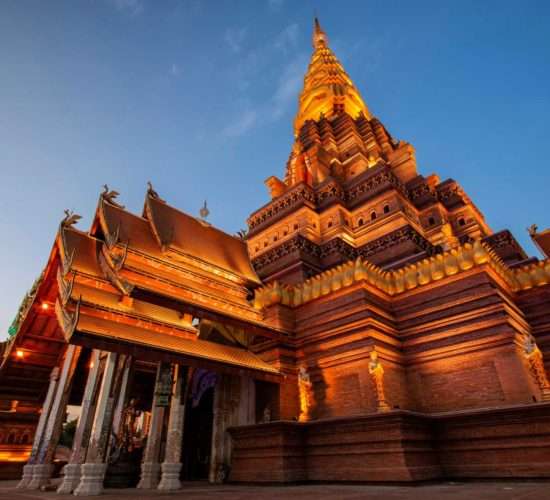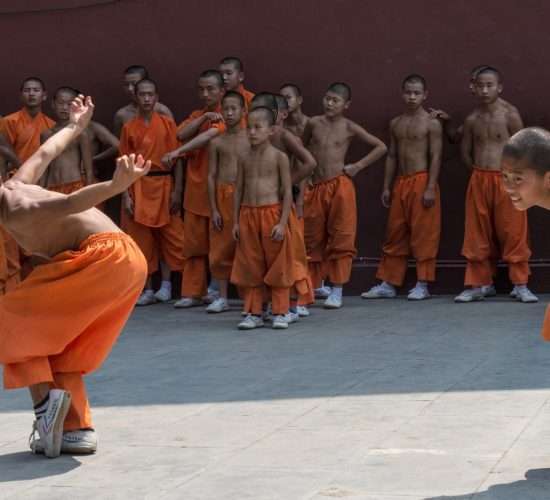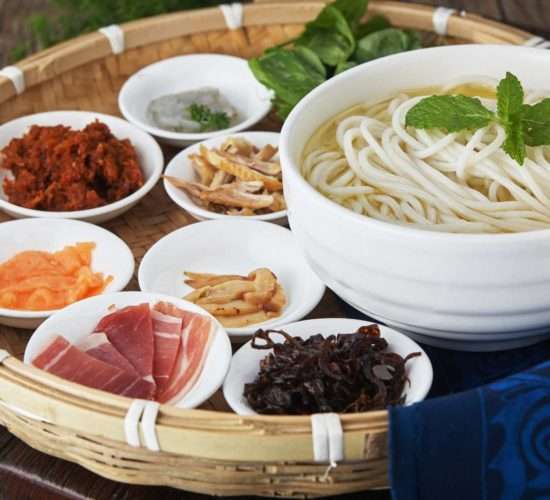China’s southwestern province of Yunnan encompasses a wide range of scenery, architecture, and culture. Across this diverse province is a winding trade route survived from the Tea Horse Road.
As the primary link through the Himalayas, the Tea Horse Road once served as the passageway for trade along the western frontiers of China. Its name derives from each region’s best commodities – tea from southern China and horses from Tibet. Eventually as trade flourished, this trade network expanded, stretching past southern China and Tibet to extend through Myanmar, Nepal, and India.
The land network of the Tea Horse Road is thought to have been the longest ancient trade route in the world, and the journey was not an easy one. Today, easier and more efficient methods of trade have left the ancient paths of the Tea Horse Road largely abandoned. However, for those who know where to look, remnants of the route and its age-old travelers live on today. And right now, we’re looking at Yunnan.
Xishuangbanna

The tea-horse exchange between southern China and Tibet began (or ended, depending on where you were coming from) in Xishuangbanna, home to, the now world-famous, pu’er tea. Following the normal process of picking, drying, and rolling the tea leaves, Pu’er is distinguishable primarily by its fermentation process, made possible by the unique climate in this part of Yunnan.
The roots of pu’er tea production in Xishuangbanna are still visible today. The sprawling Menghai market, a hub for local farmers to trade their produce, is a real-life embodiment of the residual culture of the ancient Tea Horse Road. Among the colorful selection of fresh produce are high-quality pu’er teas, being sold directly from the source – the tea farmers who grew them on the nearby mountains.
For those looking to get an even closer look at the living history of pu’er, a visit to Nannuo Mountain, home to ancient tea tree forests and the descendants of the first tea cultivators, will reward. Here local villagers of the Akha (also known as Aimi) minority live amongst the tea, as they have done for centuries. Dirt paths weave through forests of tea bushes, yellow wildflowers, and leaning bamboo shoots – an easy picture into the past. We recommend diving in to Lisa See’s novel, the Tea Girl of Hummingbird Lane, to fully immerse in the history and story of tea amidst the Akha people of Nannuo Mountain.
Shaxi

The small market town of Shaxi is sometimes included as a pit stop on the road between Dali and Lijiang, if not overlooked altogether. In our opinion, this is a mistake, as the town has a long history and much to offer still. Shaxi was a well-known stop on the Tea Horse Road, and the cobbled streets of Sideng Square provide a glimpse into the past, when horses and tradesmen bustled about in the dust, seeking a short respite from their long journey.
On Fridays, the town folk and rural inhabitants gather together for the weekly Friday market. The eclectic range of wares on offer, from goat cheese to artisanal crafts to fresh produce, gives yet another offering of what the days of the Tea Horse Road left behind in this small outpost.
Shaxi’s nearby Shibaoshan Grottoes, ancient stone-carved Buddhist figurines chiseled into the side of an unassuming cliff, yield another gem from the Tea Horse Road days – the dissemination of Mahayana Buddhism brought from Tibet to Yunnan.
Lijiang

Just outside the well-trodden Old Town of Lijiang lies the small village of Shuhe, where ancient canals funnel running water through the individual architecture of the resident Naxi minority. The Naxi people played an integral role on the Tea Horse Road, so spending time in Shuhe learning about their culture and religious beliefs is recommended. Additionally, a more literal representation of the Tea Horse Road can be found here – The Tea Horse Road Museum. While the museum is primarily in Chinese, English-speaking visitors are still able to enjoy the historical and cultural relics of past traders’ journeys on display.
Shangri-La

The high-altitude mountain-scape of Shangri-La, bustling with Tibetan culture and lamaseries, begs no question that this was once a stop on the Tea Horse Road. Here, the teas originally harvested from further down the Tea Horse Road in places like Xishuangbanna and Dali, are mixed with yak butter in the traditional Tibetan style. Yak butter tea is common all over Tibet, with local tea houses full of Tibetans sipping on the creamy liquid, soaking up its warming properties to aid in fighting the harsh, cold climate that Tibet calls home.
The gilded Songzanlin Monastery, the largest monastery in all of Yunnan, is a prevailing fixture of Tibetan Buddhism in Shangri-La. Spend some time wandering the elaborate halls and observing the practicing lamas who live here.
From Shangri-La the Tea Horse Road continues west through the Himalayas toward Lhasa. Though foreign passport holders can no longer make the overland journey from Shangri-La to Lhasa, there are direct flights from Shangri-La’s Diqing airport to Lhasa, if you wish you continue to your journey following along the Tea Horse Road.
Join our Expert-Led Tour:
Traversing the Ancient Tea Horse Road
Follow the trail back to its roots on this journey, led by China Explorer, author and tea expert Jeff Fuchs, along tea’s most ancient trade roads. Hike through the forests of the first tea trees and step into the homes of descendants of the first tea cultivators on this thirst-quenching National Geographic ‘Tour of a Lifetime’











